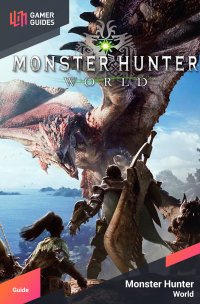Kushala Daora General Information¶
You’ll be able to undertake the assignment Kushala Daora, Dragon of Steel after collecting enough Kushala Daora Research Points in the Ancient Forest after completing the assignment A Wound and a Thirst. After completing the assignment Kushala Daora, Dragon of Steel you’ll be given the optional quest The Winds of Wrath Bite Deep, should you desire to hunt Kushala Daora more. Once you hit Hunter Rank 50, you can start hunting Tempered Kushala Daora via investigations.
| General Information | . |
|---|---|
| Type | Elder Dragon |
| Quests | Kushala Daora, Dragon of Steel (8*), The Winds of Wrath Bite Deep (8*) |
| Variants | High Rank / Tempered (Threat Level 3) |
Kushala Daora Strengths and Weaknesses¶
Kushala Daora’s head, front limbs and tail are all more vulnerable to damage than normal, with the head taking the most punishment from Cut damage and Blunt damage, while the tail is receptive to Ammo damage. The front limbs take equal - but less - damage from all sources. The head and wings are both breakable, while the tail is severable.
Kushala Daora is weak to Thunder damage, but resistant to Water and Ice. Otherwise, it’s moderately receptive to Dragon damage, and the Elderseal ability will calm the winds surrounding Kushala Daora, make you less likely to fall down when near it, and making it less likely to deflect attacks.
Although it’s resistant to Sleep and Paralysis, Kushala Daora is susceptible to both the Poison and Blast ailments.
As the fight progresses, Kushala Daora will shroud itself with wind, which it’ll use to form vortexes when it takes to the air, creating a persistent tornado on the ground from whence it flew, knocking characters down and dealing damage if they’re too close to the center of the storm. It’ll also passively gather this wind around itself, giving it a barrier that can knock down melee attackers and deflect attacks. Stunning it or using Elderseal weapons can hinder the wind shroud around itself.
Since Kushala Daora flies around quite a lot, bringing along Flash Pods is advised… just be sure not to knock it down in the midst of one of its own vortexes if you want to capitalize on the downed dragon.
| Elements | . |
|---|---|
| Fire | * |
| Water | X |
| Thunder | * * * |
| Ice | X |
| Dragon | * * |
| Ailments | . |
|---|---|
| Poison | * * * |
| Sleep | * |
| Paralysis | * |
| Blast | * * * |
| Stun | * * |
Kushala Daora Attacks¶
Kushala Daora is the master of wind, and as such it should be no surprise that it frequently employs wind attacks as the primary component of not only its offense, but its defense as well… and just as general battlefield impediments. Whereas other monsters may have relied on poison, fire or ice breath, Kushala Daora will breathe gusts of wind in a variety of forms and intensities. Quick blasts of wind - both while on the ground or in the air - do respectable, but not devastating damage, but a much more impressive blast (usually ground-based, and preceded by Kushala Daora rearing back and inhaling) is quite powerful, and should be avoided at all costs. It won’t refrain from using these attacks immediately after roaring or employing other wind attacks which, while otherwise harmless, can leave you reeling and exposed. It can also use the quicker wind blast attacks in rapid succession - up to three times in one quick combo. If that’s not enough options for it, it can also expel this breathe a short-range arc of wind instead of long-range blasts.
Despite its affinity for wind, Kushala Daora isn’t above stooping to using claws and fangs against would-be hunters. It can perform a sweeping claw attack curing which it can rotate considerably, allowing it to attack an otherwise safe-seeming foe at its flank, and may bite over its shoulder to similar effect. It’ll also use at least two types of charge attacks - a galloping rush, and a leap attack which covers a great deal of ground. It’s also capable of covering a fair amount of ground while in the air, as well, during which it’ll usually perform an aerial charging bite, and will even more frequently perform a flying rake with its rear claws. Unlike many other monsters, the Kushala Daora has no qualms about repeatedly using the same attack several times in a row.
All of these attacks are complicated by more passive elements of Kushala Daora’s wind mastery. Most notably are the cyclones it can generate when it takes to the air. These can deal damage if you’re too close to Kushala Daora when it takes to the sky, or if for some reason you find yourself falling into one, but they also will knock you back readily enough. While not terrible on their own, they do last quite a while and impede your mobility significantly. Add that to the fact that Kushala Daora may spawn several of them in an area (over multiple take-offs, of course) and it can really be a hindrance. Don’t beat your head against a wall, if Kushala Daora spawns too many tornadoes in an area, retreat and lure Kushala Daora to you. Better to reposition yourself in more favorable ground than to insist on fighting at a disadvantage.
In addition, throughout the fight Kushala Daora will - much like Kirin - use its element to shroud itself. This wind that surrounds Kushala Daora may occasionally knock down melee attackers, or repel ranged attacks entirely. Sticking it out and dealing sufficient damage to stun the dragon will remove its wind armor, but you can also use Elderseal weapons to reduce its intensity.
| Carves | Frequency |
|---|---|
| Daora Dragon Scale+ | * * * * * |
| Daora Carapace | * * * * |
| Daora Claw+ | * * * |
| Daora Horn+ | * * |
| Daora Webbing | * * * |
| Daora Gem | * |
| Rewards | Frequency |
|---|---|
| Daora Carapace | * * * * |
| Daora Dragon Scale+ | * * * * |
| Daora Claw+ | * * * |
| Daora Webbing | * * * |
| Elder Dragon Bone | * * |
| Elder Dragon Blood | * * * |
As with most High Rank monsters, Kushala Daoar drops a gem of high rarity, which can - very rarely - be obtained by carving the Elder Dragon’s corpse. Alternatively you can break the head or carve its severed tail for another chance at this treasure. The Daora Horn+ is another hard-to-find material that can be carved from the body, but it’s also a common drop from breaking the head. You can also frequently obtain a Daora Tail by carving its severed tail.

 Sign up
Sign up

No Comments